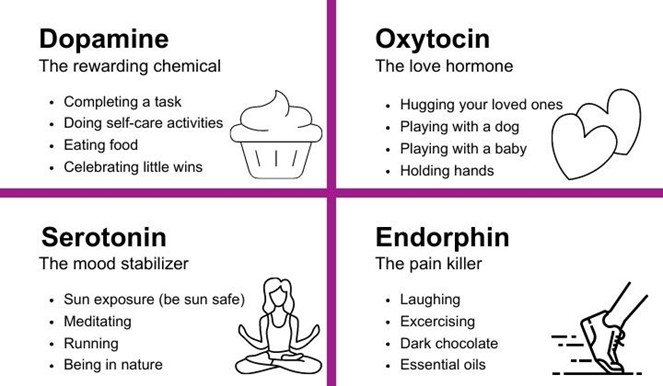The practical nurse (PN) is caring for a client whose urine drug screen is positive for cocaine. Which behavior is most likely seen in this client?
Elevated energy level
Powerful craving for more
High self-esteem
Euphoria
The Correct Answer is A
- Cocaine is a powerfully addictive stimulant drug that increases the levels of dopamine in the brain, which is a chemical messenger related to movement, pleasure, and motivation.
- Cocaine's effects appear almost immediately and last for a few minutes to an hour, depending on the method of use. Some of the short-term effects of cocaine include extreme happiness and energy, mental alertness, hypersensitivity to sight, sound, and touch, and irritability.
- An elevated energy level is one of the most common and noticeable effects of cocaine use, as cocaine stimulates the central nervous system and makes the user feel more alert, active, and confident¹². This effect may also lead to increased physical activity, talkativeness, or aggression.
Therefore, option A is the correct answer, while options B, C, and D are incorrect.
Option B is incorrect because a powerful craving for more cocaine is not a behavior that can be observed by others, but rather an internal feeling that the user may experience due to the addictive nature of the drug.
Option C is incorrect because high self-esteem is not a typical effect of cocaine use, as cocaine may cause paranoia or anxiety in some users.
Option D is incorrect because euphoria is not a behavior that can be observed by others, but rather an emotional state that the user may feel due to the increased dopamine levels in the brain

Nursing Test Bank
Naxlex Comprehensive Predictor Exams
Related Questions
Correct Answer is ["B","C","E","F"]
Explanation
A. Blood pressure: A normal blood pressure for an adolescent is 110/70 mm Hg. The question does not provide the adolescent's blood pressure, so it cannot be determined if it requires follow-up or not.
B. Capillary refill: A normal capillary refill time is less than 2 seconds. A prolonged capillary refill time indicates impaired blood flow to the extremity, which could be due to vascular injury, compartment syndrome, or shock.
C. Pedal pulse: A normal pedal pulse is +2 or +3. A weak pedal pulse (+1) indicates reduced blood flow to the extremity, which could be due to vascular injury, compartment syndrome, or shock.
D. Heart rate: A normal heart rate for an adolescent is 60 to 100 beats per minute. The question does not provide the adolescent's heart rate, so it cannot be determined if it requires follow-up or not.
E. Skin temperature: A normal skin temperature is warm and dry. A cool skin temperature indicates reduced blood flow to the extremity, which could be due to vascular injury, compartment syndrome, or shock.
F. Pain: A pain level of 10 on a scale of 0 to 10 indicates severe pain that needs to be managed with appropriate analgesics and nonpharmacological interventions.
Correct Answer is A
Explanation
A. Correct. The nurse should turn off the CPM machine during mealtime, as it can interfere with the client's ability to eat and drink comfortably. The nurse should also turn off the CPM machine when transferring or repositioning the client, or when performing wound care or other interventions on the affected leg.
B. Incorrect. The nurse should maintain the client's affected hip in a neutral position, as external rotation can cause malalignment of the prosthesis and impair healing. The nurse should use pillows or wedges to support the leg and prevent rotation or abduction of the hip joint.
C. Incorrect. The nurse should not instruct the client how to adjust the CPM settings, as this can compromise the prescribed range of motion and speed of the device. The nurse should follow the provider's orders and check with them before making any changes to the CPM settings. The nurse should also monitor the client's pain level and administer analgesics as needed to facilitate compliance with the therapy.
D. Incorrect. The nurse should not store the CPM machine under the client's bed when not in use, as this can pose a safety hazard and damage the equipment. The nurse should place the CPM machine on a stable surface near the bed and ensure that it is plugged into a grounded outlet and has adequate battery backup in case of power failure.
Whether you are a student looking to ace your exams or a practicing nurse seeking to enhance your expertise , our nursing education contents will empower you with the confidence and competence to make a difference in the lives of patients and become a respected leader in the healthcare field.
Visit Naxlex, invest in your future and unlock endless possibilities with our unparalleled nursing education contents today
Report Wrong Answer on the Current Question
Do you disagree with the answer? If yes, what is your expected answer? Explain.
Kindly be descriptive with the issue you are facing.
